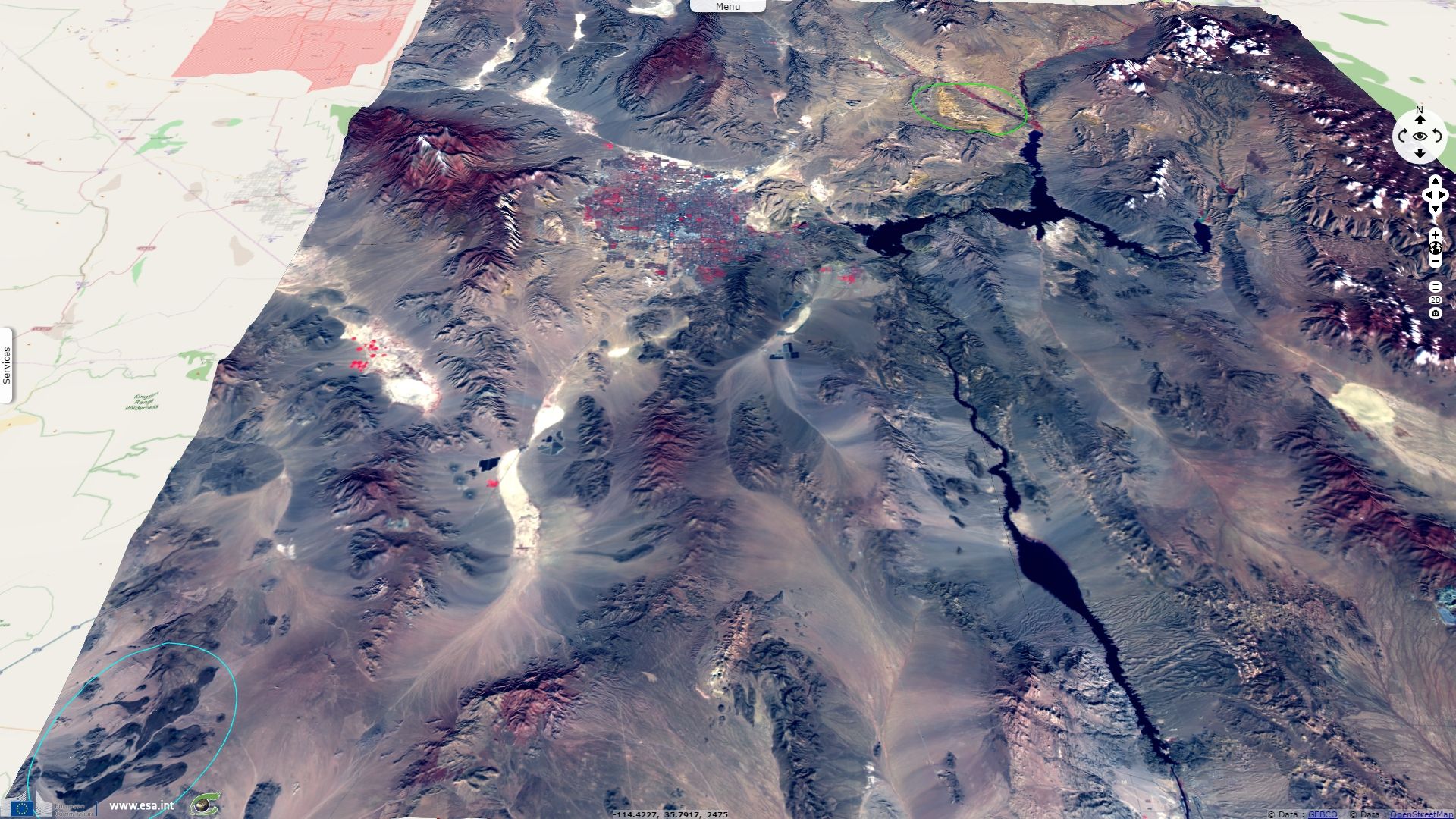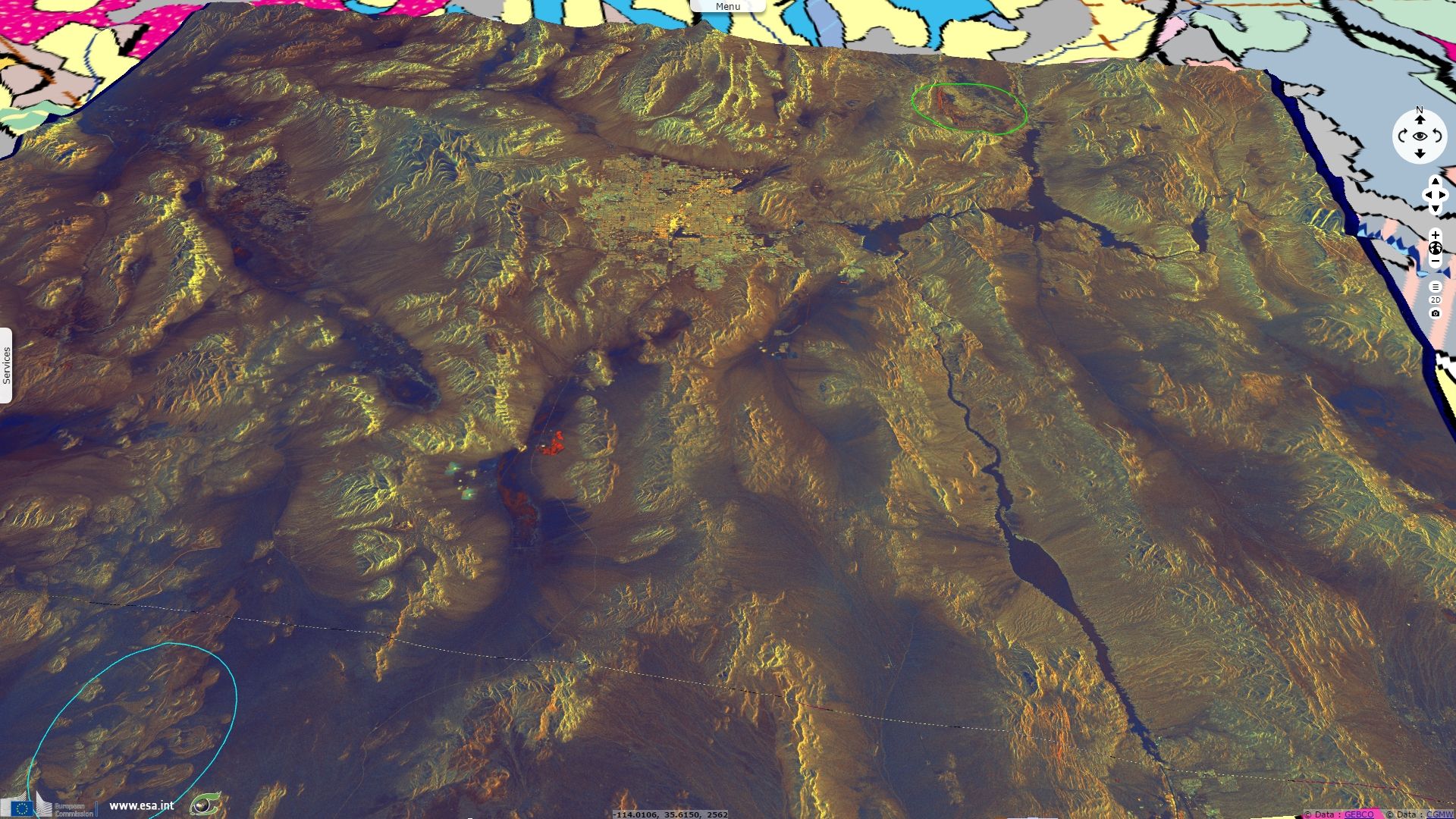Las Vegas, solar energy & golfs in the desert
Sentinel-1A CSAR IW DV GRD acquired on 27 February 2017 from 13:43:17 to 13:43:42 UTC
On these zoomed in details, multiple photovoltaic systems, electric pylons and quarries can be identified.
According to Paul Skrbac, Chris Stachelski and Andy Gorelow in their publication « The Climate of Las Vegas, Nevada », the annual mean rain precipitation is 106 mm and precipitation exceed 0.01 inch only 26 days a year.
This location and its associated arid climate are highly favorable to solar energy production which lead to the construction of several photovoltaic and several concentrated solar power stations around Las Vegas. In a report issued in 2015, the Energy agency from the State of Nevada presents a map of the renewable energy projects that were granted subsidies by Nevada in 2015, all projects located near Las Vegas are solar-based energy. See also https://en.wikipedia.org/wiki/Solar_power_plants_in_the_Mojave_Desert
The arid climate of this area makes it unfavourable to vegetation. In fig.1, dark red shows presence of sparse forest in the higher relief such as the Spring Mountains, there is very little natural vegetation in the alluvial fans and almost none in the saline dry lakes. However, irrigation allows domestic vegetation to grow such as a few fields, west of the image, or numerous golf courses which represent the majority of the healthy or dense vegetation in the area. They can be identified, visible in bright red on S-2 images and in dark blue on S-1 images and can compared to the map provided by Las Vegas municipal website which lists 41 golfs greens in the area.


Since this estimation of 1.9 m subsidence in 1986, population has more than tripled in Las Vegas metropolitan area, withdrawals to recharge rate has since worsened.













